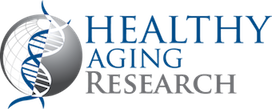
Healthy Aging Research
Open Access
ISSN: 2261-7434

ISSN: 2261-7434
Perspective - (2022)Volume 11, Issue 3
According to the stem cell theory of aging, the inability of different types of stem cells to continuously replenish the tissues of an organism with functional differentiated cells capable of preserving those tissues' original function leads to the aging process. No matter how old a system is, damage and error buildup in genetic material is an issue. Young people have far more stem cells than older people, which results in a better and more effective replacement mechanism than the elderly. In other words, aging isn't caused by more damage rather, it's caused by a failure to repair it since there are fewer stem cells. Stem cells become less in number and likely to lose their capacity to procreate lymphoid and myeloid lineages.
Several parameters must be met in order to maintain the stem cell pools' dynamic balance. Maintaining the stem cell pool requires a delicate balance between quiescence and proliferation as well as homing and self-renewal of hematopoietic stem cells, whereas differentiation, mobilization, and senescence are deleterious. Over time, these negative effects will lead to apoptosis. The therapeutic use of stem cells and their capacity to regenerate organs and tissues is not without its difficulties. First, although if all cells derive from the same stem cells, they may have varied lifespans. As a result, aging may proceed differently in cells with longer lifespans compared to those with shorter lifespans. Additionally, the endeavor to continuously replace the somatic cells may exhaust the stem cells.
Hematopoietic stem cell aging
The blood system is constantly renewed and kept in a state of balance by hematopoietic stem cells (HSCs). Long-term HSCs age with an accumulation of DNA strand breakage. The extensive attenuation of DNA repair and response pathways, which rely on HSC quiescence, is linked to this accumulation.
In the non-homologous end joining repair of double-strand breaks, DNA ligase 4 plays a much specialized role. During aging, mice lacking Lig4 have a gradual decrease of HSCs. These results imply that the capacity of HSCs to sustain themselves throughout time is significantly influenced by Non-Homologous End Joining (NHEJ).
Hematopoietic stem cell diversity aging
Around the age of 70, the clonal variety of stem cells that make blood cells drastically declines to a smaller number of fastergrowing cells, supporting a unique theory of aging that might promote healthy aging.
Hematopoietic mosaic loss of chromosome Y
The mosaic loss of chromosomal Y, which affects at least 40% of 70-year-old men to some extent, is a loss of the Y chromosome in a subpopulation of blood cells that causally increases the risk of fibrosis, heart disease, and mortality.
Hair follicle stem cell aging
The aging of the hair follicle is a major factor in hair loss as people become older. Normally, the stem cells linked to each hair follicle regulate hair follicle renewal. The DNA damage that builds up in renewing stem cells as we age appears to be a major factor in the aging of the hair follicle. As a result of the DNA damage in the hair follicle stem cells, neutrophil elastase breaks down type XVII collagen in this damage response. Collagen is proteolyzed, which results in the death of the injured cells and the shrinkage of the terminal hair follicle.
Citation: Lin S (2022) Stem Cell Theory of Aging. Healthy Aging Research.11:150
Received: 01-Nov-2022, Manuscript No. HAR-22-21460; Editor assigned: 04-Nov-2022, Pre QC No. HAR-22-21460 (PQ); Reviewed: 18-Nov-2022, QC No. HAR-22-21460; Revised: 25-Nov-2022, Manuscript No. HAR-22-21460 (R); Published: 02-Dec-2022 , DOI: 10.35248/2261-7434.22.11.150
Copyright: © 2022 Lin S. This is an open-access article distributed under the terms of the Creative Commons Attribution License, which permits unrestricted use, distribution, and reproduction in any medium, provided the original author and source are credited.